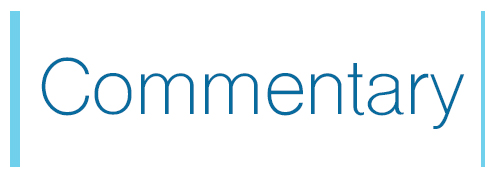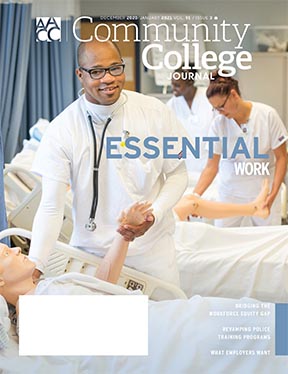Workforce development is at the forefront of everyone’s mind as we continue to navigate the pressures of the pandemic and its impact on the nation’s workforce. From closed businesses and lost jobs to health and safety concerns for workers and consumers, building a nation of workers is critical to the economic recovery of local communities and students.

Building that workforce is something that community colleges have been doing for years, and leaders need be ready to address the revised needs of their local municipalities to build and sustain a workforce pipeline that provides for well-paying jobs today and tomorrow.
In some cases, the work itself has changed. Technology advances despite world events. That technology and automation have impacted the way in which business gets done around the world. Look at your campus functions and consider the things that are done differently in the wake of the pandemic.
This article comes from the upcoming December/January edition of the Community College Journal, the flagship publication of the American Association of Community Colleges.
Students also are different. The Accenture report “Harnessing Revolution: Creating the Future Workforce” notes that 76% of millennials are interested in freelancing and not being “company men and women.” They bring a different set of values to the workforce that needs to be understood. Lifelong learning and skill-building will allow them to meander through their career rather than take a straight line through one career at one company. The education they seek to build those skills may look different, as well.

Community colleges remain poised to be proven effective partners in skill-building opportunities. Partnering with local businesses has become the norm, and the events of the recent year have allowed all of us to look at how we deliver our mission. One thing is clear, flexibility will be a key factor going forward. We will not return to normal because normal has shifted. The future will require us to be flexible in curriculum development, scheduling, delivery and partnerships. Change will continue and evolve, and so must we.
Changes in technology, robotics and automation may affect your local employment pipeline. But that’s not all that has changed. Hospitality, allied health and first responders training have also been altered. Our colleges will be impacted by the way students choose to obtain skills needed to be an effective part of this evolving local economy and job market. The only way to address the needs of students and the workforce is to continue to work together to build upon current successes and anticipate new ways of working.
Workforce development will continue to evolve, but our work at the national level will continue. We will continue to work across the aisle and across sectors to advance the rhetoric and policy related to workforce education. Resources are more crucial than ever to the success of these programs that will help ensure that Americans get back to work.
Register today for WDI: AACC’s annual Workforce Development Institute, to be held virtually January 27-28, will be chock full of ideas and innovations related to helping students, employers and colleges, particularly during the pandemic. Don’t miss it!

